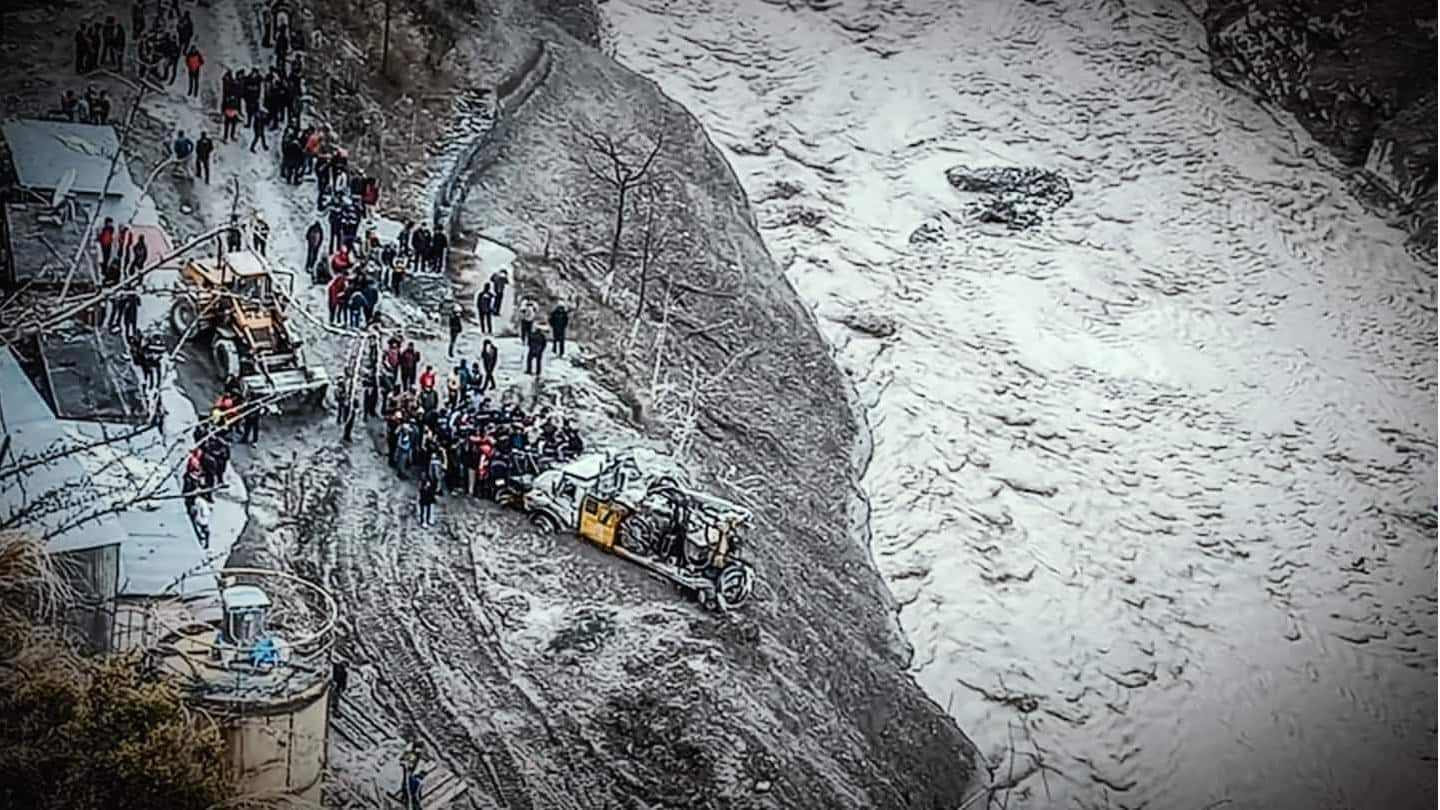
Massive rock and ice avalanche caused the Chamoli disaster: Study
What's the story
The February 7 disaster in the Chamoli district of Uttarakhand, that resulted in over 200 dead or missing, was the result of an avalanche that dropped about 27 million cubic meters of rock and glacier ice from the nearby Ronti Peak, according to a study by an international team of researchers. The humanitarian tragedy hit the Ronti Gad, Rishiganga, and Dhauliganga river valleys.
Team
Researchers from across the world came together to investigate
A global team of 53 scientists investigated the cause, scope, and impacts of the disaster in the days following the tragedy. The researchers, including those from Jawaharlal Nehru University, New Delhi, and the Indian Institute of Technology Indore, determined that the flood was caused by falling rock and ice that melted on its descent and not by a lake or diverted river.
Research
Study highlights risks posed by development projects in fragile areas
The study, published in the journal Science on Thursday, suggests that climate change is contributing to such events happening more frequently, and highlights risks of increasing development projects in fragile environments. The avalanche rapidly transformed into an extraordinarily large and mobile debris flow that transported boulders 20 meters in diameter and scoured the valley walls up to 220 meters above the valley floor.
Further details
The 'glacial lake' hypotheses was debunked
Initial hypotheses for the cause suggested a glacial lake outburst flood. However, there are no glacial lakes large enough to produce a flood anywhere near the site, the researchers noted. "Our access to high-resolution satellite imagery and research software, and our expertise in satellite remote sensing were crucial to getting a bird's-eye view of how the event unfolded," said study co-author Shashank Bhushan.
Results
A conspicuous dark patch led them closer to the answer
The team compared the images and topographic maps from before and after the event to document all of the changes. Researchers tracked a plume of dust and water to a conspicuous dark patch high on a steep slope. The dark patch turned out to be the scar left by the 35 million cubic yards of missing rock and glacier ice with a three-foot-deep layer.
Environment
Lessons learnt should be pondered upon before further activity: Researcher
The researchers suggest that climate change is likely increasing the frequency of such events and that the magnitude of this disaster should be considered before further development in the area. "We hope that lessons learned from this effort will improve our ability to respond to future disasters and guide policy decisions that will save lives," said David Shean, a University of Washington assistant professor.